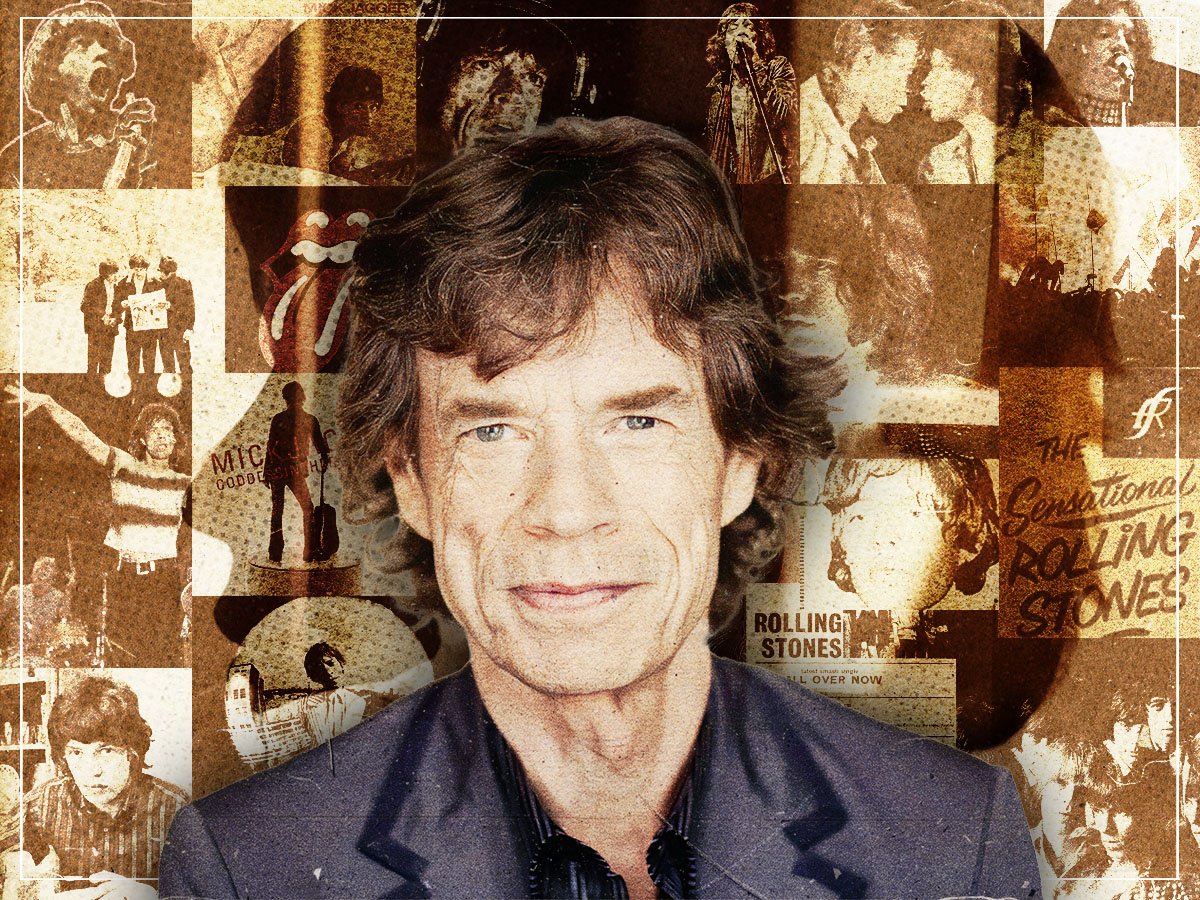Just in: Mick Jagger’s stated his most disastrous collaboration ever…
“THE (The Hardest Ever)”: Mick Jagger’s Most Disastrous Collaboration
Introduction
In a career spanning over six decades, Mick Jagger has been at the forefront of rock and roll as the iconic frontman of The Rolling Stones. His collaborations outside the band have often attracted attention, sometimes for their brilliance and at other times for their bewildering audacity. Among these, one collaboration stands out as particularly controversial and widely regarded as a misstep: “THE (The Hardest Ever),” a 2011 single by will.i.am featuring Jennifer Lopez and Mick Jagger. What was intended to be a high-powered, genre-bending anthem instead became a lightning rod for criticism, confusion, and disappointment. This essay explores the origins, execution, reception, and legacy of “THE (The Hardest Ever),” analyzing why it is seen by many as Jagger’s most disastrous musical partnership.
Background and Conception
To understand the context of “THE (The Hardest Ever),” it’s important to examine the musical landscape of the early 2010s. Electronic dance music (EDM) was on the rise, pop music was embracing techno-infused beats, and cross-genre collaborations were becoming the norm. Will.i.am, already a prominent figure in both pop and hip-hop, was crafting his fourth studio album, #willpower, and aimed to push boundaries by fusing diverse voices and sounds.
Enter Mick Jagger, a rock legend whose relevance had spanned generations. By 2011, Jagger was in his late sixties, still active with the Stones and still interested in exploring new sonic territory. It wasn’t the first time he had dabbled in unconventional projects – from solo records to guest appearances on rap tracks. Yet, nothing quite prepared the music world for his collaboration on “THE (The Hardest Ever).”
Jennifer Lopez, another high-profile pop icon known for her versatility and star power, completed the trio. On paper, the song promised an explosive mix of star wattage, musical diversity, and commercial viability. In reality, the outcome was a confusing amalgamation of styles, seemingly held together by the sheer fame of its contributors rather than any cohesive artistic vision.
Musical and Lyrical Analysis
From its opening, “THE (The Hardest Ever)” attempts to impress with bombastic production. It features a blend of heavy electronic beats, synth-driven bass lines, and jarring transitions. Will.i.am’s rapped verses lean heavily into motivational, pseudo-inspirational themes, offering lines like “You can go hard or you can go home.” The lyrics are formulaic, echoing a trend in early 2010s pop music to emphasize empowerment, ambition, and luxury without much substance.
Jennifer Lopez delivers a melodically forgettable chorus, her voice autotuned and layered to fit the song’s electronic texture. Her performance, while competent, lacks emotional resonance and feels more like a branding exercise than a musical contribution.
Then comes Mick Jagger. His appearance is both brief and baffling. He enters the track with his signature swagger, but the context of the song makes his contribution feel disjointed. The rock-and-roll grit that defines Jagger’s legacy is out of place amidst the synthetic production. His vocals, processed and layered with effects, sound awkward rather than edgy. Instead of adding gravitas, his presence feels like a gimmick – a rock legend parachuted into a futuristic pop experiment with little regard for coherence.
Critical and Public Reception
Upon release, “THE (The Hardest Ever)” was met with widespread confusion and criticism. Music critics panned the track for its lack of direction, its overproduced sound, and its reliance on star power over substance. Reviews described it as “soulless,” “cluttered,” and “a mess of styles that never quite connect.”
For Jagger in particular, the collaboration raised eyebrows. Fans and critics alike questioned why an artist of his stature would associate with a project so far removed from his musical roots. While experimentation is often commendable, Jagger’s appearance on this track was seen as a miscalculation, diluting his rock legacy in a sea of EDM tropes and banal lyrics.
The music video did little to redeem the track. Featuring futuristic visuals, product placements, and surreal imagery, the video tried to match the song’s ambitious energy but ended up amplifying its incoherence. Jagger, appearing toward the end, seemed out of place – a rock icon trapped in a world of neon lights and CGI.
Commercially, the song achieved moderate success, charting in several countries and receiving radio play. However, it quickly faded from public consciousness, failing to leave a lasting impact. For all its star power, “THE (The Hardest Ever)” became a footnote in the careers of its contributors, remembered more for its spectacle than its substance.
Why It Failed
Several factors contributed to the failure of “THE (The Hardest Ever),” particularly from Jagger’s perspective:
1. Lack of Artistic Synergy: The collaboration lacked a clear artistic vision. Each artist seemed to bring their own style without any real integration. Jagger’s rock sensibility clashed with will.i.am’s electronic production and Lopez’s pop vocals, resulting in a disjointed composition.
2. Overproduction: The song suffers from excessive production. Layers upon layers of synthetic sounds drown out any organic elements, making Jagger’s raw energy feel misplaced and subdued.
3. Misaligned Branding: Jagger’s brand as a rebellious, edgy rock icon didn’t translate well in this context. His appearance felt more like a cameo for novelty than a genuine musical collaboration.
4. Changing Industry Trends: The early 2010s were dominated by EDM and pop-rap hybrids. While these trends worked for artists like will.i.am and Lopez, they were not a natural fit for Jagger, whose strengths lie in blues-based rock and charismatic live performance.
5. Audience Disconnection: Jagger’s core audience, primarily fans of classic rock, found little appeal in the track. Meanwhile, younger pop fans may not have appreciated or even recognized Jagger’s legacy, making his inclusion ineffective in bridging generational gaps.
Legacy and Retrospective Views
In retrospect, “THE (The Hardest Ever)” has become a case study in the pitfalls of high-profile collaborations. It highlights the risks of crossing genres without a unifying vision and underscores the importance of artistic compatibility. For Mick Jagger, the song remains an outlier – a misjudged attempt to stay current in an ever-evolving music industry.
Interestingly, Jagger has not often spoken publicly about the track, perhaps indicating his own ambivalence toward the project. In contrast to his more successful ventures, such as his collaborations with David Bowie or Lenny Kravitz, “THE (The Hardest Ever)” lacks the depth and authenticity that typically characterizes Jagger’s extracurricular work.
In the years since its release, the song has largely been forgotten. It rarely appears on playlists, retrospectives, or fan compilations. Critics occasionally cite it when discussing failed celebrity collaborations or when examining moments of artistic dissonance in Jagger’s career.
Conclusion
“THE (The Hardest Ever)” stands as a cautionary tale in the realm of music collaborations. Despite its star-studded lineup, the song failed to resonate either musically or culturally. For Mick Jagger, it remains a rare misfire – a moment where his pursuit of relevance led him down an uncharacteristically misguided path.
While experimentation and risk-taking are essential to artistic growth, they must be anchored in authenticity and vision. Without these, even the most legendary artists can stumble. In the grand tapestry of Jagger’s illustrious career, “THE (The Hardest Ever)” is but a curious footnote – one that serves as a reminder that not all roads lead to glory, even for rock royalty.












Post Comment